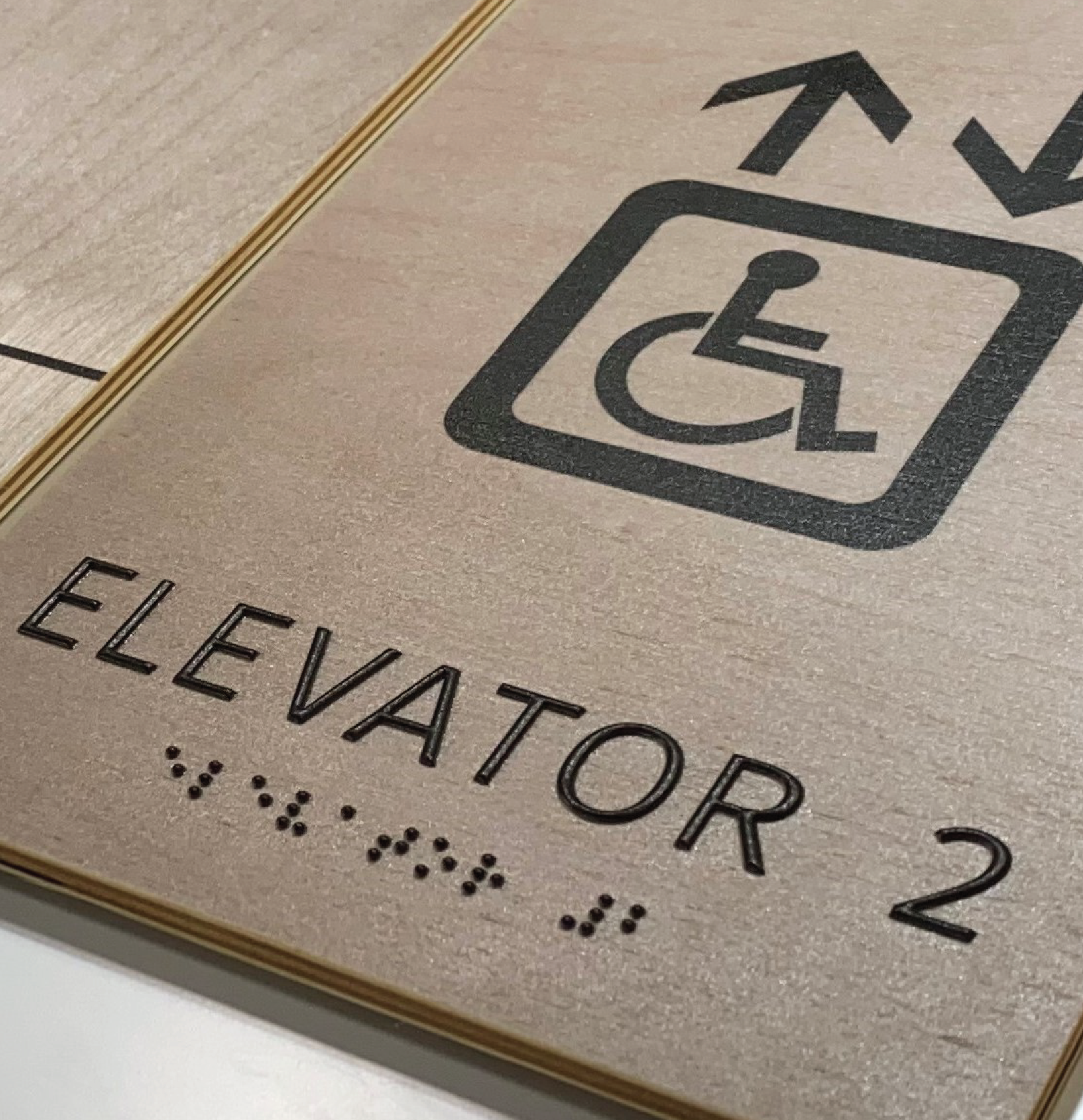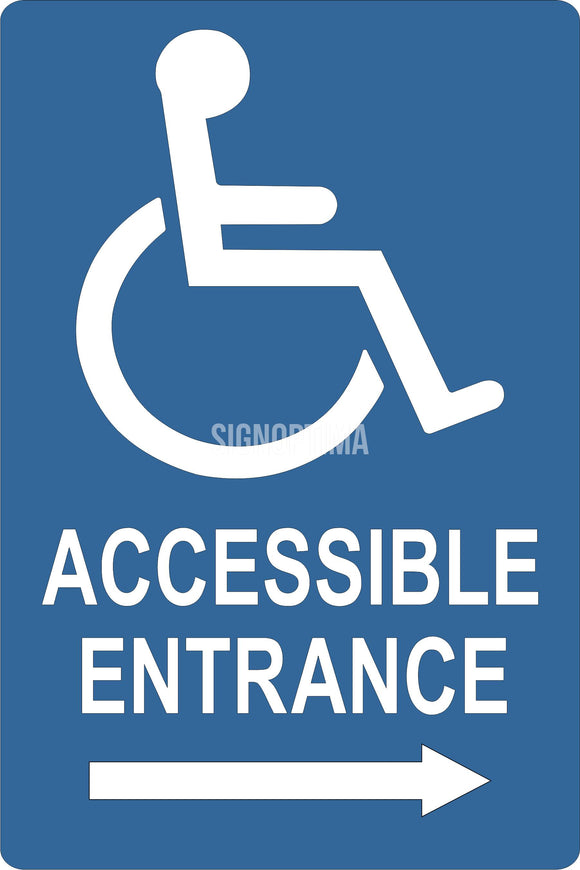Discovering the Secret Attributes of ADA Indications for Boosted Access
In the world of access, ADA indications serve as silent yet powerful allies, making certain that spaces are inclusive and accessible for people with disabilities. By incorporating Braille and responsive elements, these indications break obstacles for the aesthetically impaired, while high-contrast color design and understandable font styles accommodate diverse visual needs. Additionally, their calculated positioning is not arbitrary yet rather a computed effort to promote smooth navigation. Yet, past these functions exists a much deeper narrative regarding the evolution of inclusivity and the ongoing commitment to producing equitable areas. What a lot more could these signs represent in our pursuit of universal ease of access?
Significance of ADA Compliance
Making sure conformity with the Americans with Disabilities Act (ADA) is essential for cultivating inclusivity and equivalent gain access to in public areas and work environments. The ADA, established in 1990, mandates that all public facilities, employers, and transport solutions fit individuals with specials needs, guaranteeing they appreciate the exact same civil liberties and possibilities as others. Conformity with ADA standards not only satisfies legal commitments yet likewise enhances a company's reputation by demonstrating its commitment to variety and inclusivity.
One of the essential elements of ADA conformity is the application of accessible signage. ADA indicators are created to guarantee that people with impairments can quickly browse with structures and areas.
Furthermore, adhering to ADA guidelines can reduce the danger of legal consequences and possible penalties. Organizations that fail to follow ADA standards may deal with lawsuits or penalties, which can be both financially troublesome and destructive to their public image. Hence, ADA conformity is integral to cultivating a fair environment for every person.
Braille and Tactile Components
The consolidation of Braille and tactile aspects right into ADA signage embodies the concepts of ease of access and inclusivity. These features are vital for individuals who are aesthetically damaged or blind, enabling them to navigate public areas with better self-reliance and confidence. Braille, a responsive writing system, is essential in supplying written details in a style that can be quickly viewed with touch. It is usually placed underneath the matching text on signs to ensure that individuals can access the info without visual help.
Tactile components expand beyond Braille and include elevated icons and personalities. These parts are designed to be discernible by touch, enabling individuals to recognize space numbers, bathrooms, leaves, and various other essential areas. The ADA establishes details guidelines concerning the dimension, spacing, and placement of these tactile components to maximize readability and ensure uniformity across various atmospheres.

High-Contrast Color Systems
High-contrast shade schemes play a critical duty in improving the visibility and readability of ADA signage for people with visual problems. These plans are vital as they take full advantage of the distinction in light reflectance in between text and history, making certain that indications are conveniently noticeable, also from a distance. The Americans with Disabilities Act (ADA) mandates making use of details shade contrasts to accommodate those with minimal vision, making it an essential element of compliance.
The efficacy of high-contrast colors exists in their capability to attract attention in numerous lighting conditions, consisting of dimly lit settings and locations with glow. Commonly, dark text on a light background or light message on a dark history is utilized to accomplish optimal comparison. Black text on a white or yellow background provides a raw visual distinction that aids in fast acknowledgment and comprehension.

Legible Fonts and Text Size
When considering the layout of ADA signage, the choice of legible fonts and suitable message size can not be overemphasized. The Americans with Disabilities Act (ADA) mandates that fonts should be sans-serif and not italic, oblique, manuscript, extremely decorative, or of uncommon form.
According to ADA standards, the minimum text elevation should be 5/8 inch, and it needs to enhance proportionally with watching distance. Consistency in text size adds to a natural aesthetic experience, assisting people in browsing environments successfully.
In addition, spacing in between lines and letters is indispensable to readability. Sufficient spacing protects against characters from appearing crowded, enhancing readability. By sticking to these standards, developers can considerably boost accessibility, ensuring that signage offers its desired purpose for all individuals, regardless of their visual abilities.
Efficient Positioning Methods
Strategic positioning of ADA signage is vital for making best use of ease of access and guaranteeing compliance with lawful requirements. ADA standards specify that signs should be placed at a height in between investigate this site 48 to 60 inches from the ground to guarantee they are within the line of view for both standing and seated people.
In addition, indications need to be placed beside the lock side of doors to enable easy recognition prior to entry. This positioning aids people find spaces and rooms without blockage. In instances where there is no door, signs must be situated on the nearby surrounding wall. Uniformity in indication positioning throughout a facility improves predictability, lowering complication and enhancing general user experience.

Final Thought
ADA indications play a crucial duty in promoting availability by incorporating features that resolve the needs of individuals with disabilities. Integrating Braille and responsive elements makes certain critical info is easily accessible to the visually impaired, while high-contrast color plans and clear sans-serif font styles boost exposure throughout different lights conditions. Effective positioning techniques, such as appropriate mounting heights and critical areas, even more facilitate navigation. These components collectively cultivate a comprehensive atmosphere, highlighting the importance of ADA compliance in making certain equal accessibility for all.
In the world of availability, ADA indications serve as quiet yet effective allies, making certain that areas are inclusive and navigable for people with disabilities. The ADA, established in 1990, mandates that all public centers, companies, and transportation services fit people with disabilities, visit here ensuring they enjoy the very same legal rights and possibilities as others. ADA Signs. ADA indications are created to make sure that individuals with specials needs can quickly browse via structures and areas. ADA guidelines state that indicators ought to be placed at an elevation between 48 to 60 inches from the ground to ensure they are within the line of sight for both standing and seated people.ADA indications play a vital function in promoting ease of access by integrating attributes that attend to the requirements of individuals with impairments